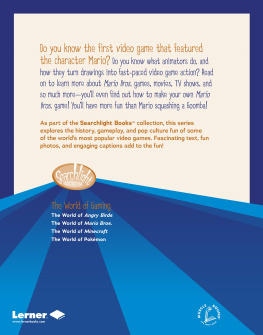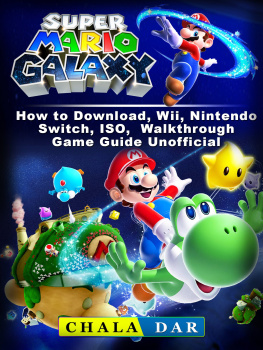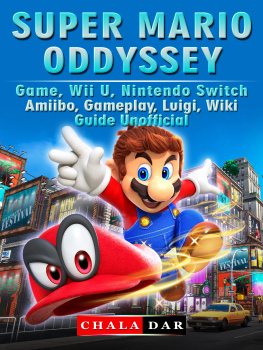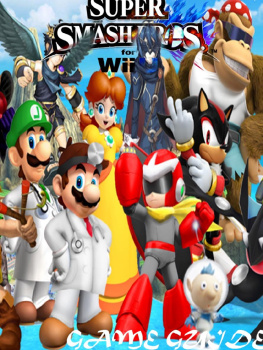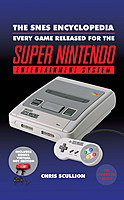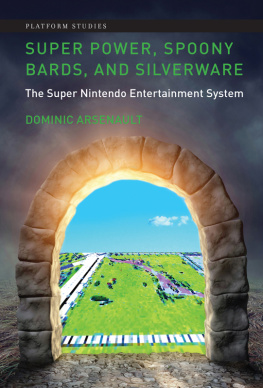1. EarthBound by Ken Baumann
2. Chrono Trigger by Michael P. Williams
3. ZZT by Anna Anthropy
4. Galaga by Michael Kimball
5. Jagged Alliance 2 by Darius Kazemi
6. Super Mario Bros. 2 by Jon Irwin
7. Bible Adventures by Gabe Durham
8. Baldurs Gate II by Matt Bell
9. Metal Gear Solid by Ashly & Anthony Burch
10. Shadow of the Colossus by Nick Suttner
11. Spelunky by Derek Yu
12. World of Warcraft by Daniel Lisi
Press Start
Super Mario Bros. 3 touched millions of livesmore than 18 million, to be exact. For an entire generation, SMB3 is the game we played in the orthodontists office, the game we talked about incessantly on the playground, and the game we stayed up all night to beat at a sleepover. Its the game whose early gameplay footage compelled us to sit through The Wizard ; the game we spray-painted onto walls, crocheted into quilts, or even tattooed onto our bodies; and the game whose music weve had stuck in our heads for 25 years. A game designer friend of mine sums it up best: Honestly, I cant remember a time without SMB3 . For me, there is no time before SMB3 .
SMB3 is a touchstone of shared cultural nostalgia, an artifact from a key moment in Nintendo history, a symbol of the golden age of Mario, and one of the most intensely hyped video games of all time. Todays game developers and scholars grew up on SMB3 the title where Mario proved he was here to stay.
When I decided to write about SMB3 , a game thats had a significant impact on my own life, I knew I was taking on a challenge. Its one of the most beloved games ever, and much has already been written about what Mario means to gaming and to the world. But besides Bob Chipmans Super Mario Bros. 3: Brick by Brick , which offers a level-by-level playthrough, no other books focus entirely on this gameon its history, its legacy, and what makes it a masterpiece.
I would venture to guess that not many people have done a lot of analysis regarding why [ SMB3 ] is their best game of all time, and they probably may not have played it since they were ten years old and still maintained that opinion, Necrosoft Games Director Brandon Sheffield told me over Skype. Although he believes SMB3 is a well-designed game that deserves the credit it gets, it does not deserve blind praise, he said. I dont think anything does. And SMB3 receives a lot of blind praise and parroted opinions, and I think people should go back and think about it a little bit more.
That, I decided, would be my goal with this book. When I set out to learn more about SMB3 , I wondered: Why does everyone love this game so much? Why do I love it so much? Why was it so incredibly successful? And are the answers to all these questions the same?
Leave Luck to Heaven
How far can you get?
opening line of Donkey Kong (1981)
Its one of my earliest and most cherished memories. Im sitting in the den with my dad, holding an NES controller far too big for my four-year-old hands, navigating Mario around the screen of SMB3 s level 1-1. I remember my dad patiently explaining to me how to jump and run, and which boxes to bump. I remember the thrill and pride when, after a few tries, I nabbed my very first mushroom.
Once I learned SMB3 s basic principles, my dad taught me other games. I would sit on his lap while we laughed at the goofy Tentacles in Day of the Tentacle , puzzled over the incomprehensible riddles of Myst , and battled through the dark tunnels of Doom . But it was SMB3 that we kept coming back to.
The piece of advice from my father Ive always remembered best is: Never give up and always try your best. During his year-long struggle against Bowser in SMB3, my father led by example.
Ninety-four bushes dance in time to the music on screen. Theyre adorable little bushes despiteor perhaps because ofthe fact that their sole facial feature is a pair of large eyes. They bob up and down in pairs of big and small, as though 47 mother and baby bushes all went out to enjoy a beautiful day in Grass Land. Except for the word HELP flashing over the white castle, and the armed patrolman pacing obsessively at the castles moat bridge, all seems well here.
SMB3 s first world map is a friendly introduction to the Mushroom World. The entire map is contained on one screen, making it easy to see your goal in the bottom right corner. The Mario sprite moves his little feet and hands back and forth quicklyfaster than the music, the trees, and the pacing Hammer Brother. Bowser has struck againthis time with the help of his Koopaling childrenand someone has to stop him. Mario is ready to get down to business. Are you?
A closer look at the map screen reveals a first glimpse of whats different about SMB3 . The coins on the paths between levels are a familiar sight, but what are those mushroom icons? We know from Super Mario Bros. and Super Mario Bros. 2 that mushrooms are a good thing, so the sight of these large mushroom houses is immediately tantalizing. And are those two castles? An entirely separate fortress (more visually reminiscent of the castles in SMB1 ) plopped square in the middle of the map blocks your way to the white HELP castle at the end. And there are more than three levels on the way to that first fortress! What is this crazy game and what happened to Marios standard three-levels-then-a-castle structure?
My mother still uses Nintendo as a stand-in word for video game. The story behind this monolithic game company is one of risk and humility, summed up by their unofficial corporate motto, which is also the meaning behind their name: Leave luck to heaven. Or, as my dad would say: Never give up and always try your best.
Nintendo was founded by Fusajiro Yamauchi in 1889 as a wooden stand in Kyoto selling handmade playing cards. Over the next century, while continuing to sell cards (which they still do today), the company would experiment with everything from instant rice to taxicabs to hourly love hotels before returning to its origins selling games and toys.
Nintendos big turning point in the US came in 1985, just two years after Atari had epically crashed and pulled the entire American gaming industry down with it. After the infamous crash, US retailers considered the video game craze to be just another passing fad, like the Hula Hoop.
But instead of giving up, Nintendo went all in. The companys home consoles were selling well in Japan, and they had hit it big in the American arcade market with Donkey Kong in 1981. That game had marked the first appearance of heroic Mario (then named Jumpman) and his creator, a young staff artist named Shigeru Miyamoto. After Nintendos space shooter Radar Scope had tanked in America, the boyish daydreamer Miyamoto had been tasked with inventing a replacement game to plug into the arcade cabinetsand he had delivered an unexpected blockbuster with Donkey Kong .
So in 1985, Nintendo forged ahead with its Famicom (short for family computer in Japan) console in America, re-naming it the Nintendo Entertainment System to avoid the term video game, which still spooked retailers traumatized by the Atari Crash. But even with the name change, the console wasnt a hit at either the January or June Consumer Electronics Show, the biggest convention at the time for unveiling new electronics products. Journalists and retailers at the show actually pointed and laughed at Nintendo for daring to resuscitate a dead industry. Meanwhile, focus tests revealed that kids, for the most part, hated the NES.



